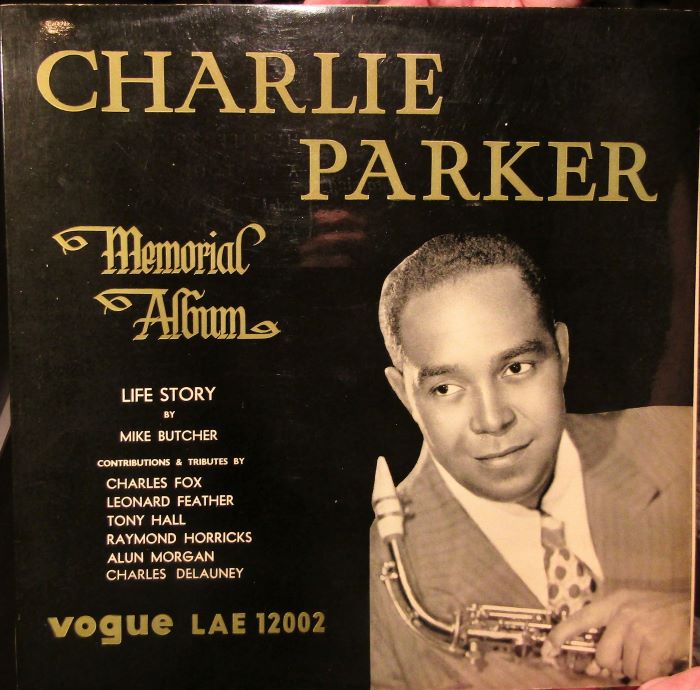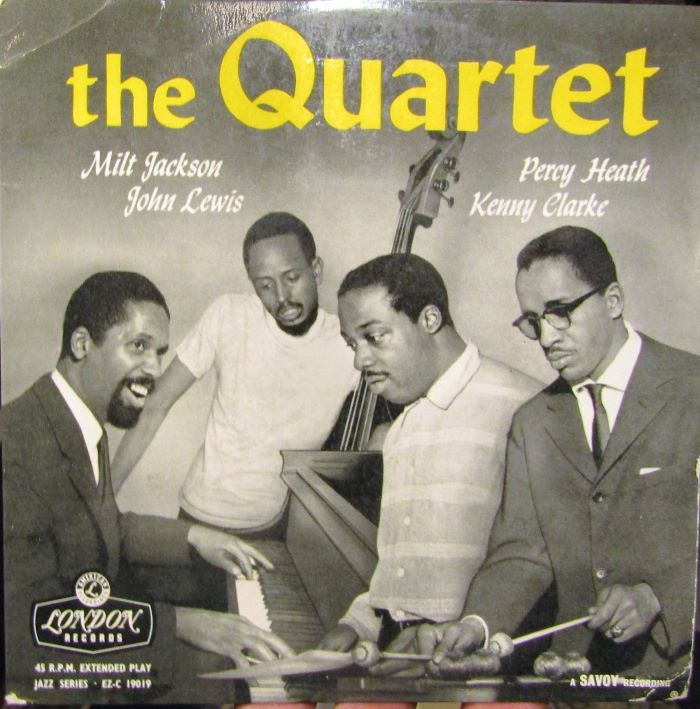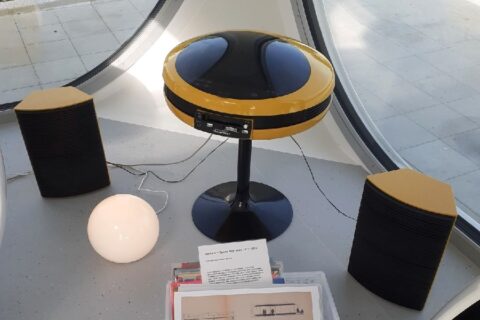Fascinating duels are taking place in the universe of turntables, both in practice and on an imaginary level.
A classic example of such a duel is what the idler driven Garrard 301 and Throrens TD 124 have gone through for decades and still do. These cult players, designed for professionals in the 1950s, have later become a reference for many Hi-Fi enthusiasts, and both have their own schools of thought around them. Other candidates for a similar combat could be the Lenco L75 and the Garrard 401. And what would happen if the EMT 927 and Continuum Audio Labs’ Caliburn & Cobra combination were up against each other?
As for direct drives, obvious contending pairs are, for example, the Denon DP-100M (1981-85) versus the Pioneer Exclusive P3 (1978-83) or the Kenwood L-07D (1979 – 82) versus the Luxman PD555 (1980 – 83). In the audiophile department, a mind-blowing comparison would be that between Goldmund Reference and Thorens Reference, both from the 1970s and 80s (a brand new Thorens Reference is now available but that’s another cup of tea). And think how amazing it would be to witness how the air-suspended Forsell Air Reference from 1994 would measure up to the magnet levitating Platine Verdier from the 1980s. And so on. The only limit is your imagination.
What is essential in these encounters between two record players is that the duel or game is not solved simply by describing the turntables, but by genuinely evaluating their good and bad aspects, and forming comparative and superlative adjectives.

Quasi comparisons
Sadly enough, such duels do not please everyone. I am thinking now especially of those who, with the absoluteness of youth and perhaps with an unduly narrow understanding of science, limit all meaningful language to descriptive sentences, because only such sentences can claim to objectivity (be true or false). It’s just a shame that a purely descriptive language doesn’t seem to enable a genuine comparison. Why?
As is well known, a descriptive sentence is one that asserts a predicate about the subject of the sentence, i.e. tells what something is like. It does this by pointing to an object in reality, comparing it to objects belonging to the same category, and asserting (or denying) that the derived descriptive predicate applies to the chosen subject, is its rightful property. A descriptive sentence says nothing about whether the object is good, bad, or something in between, but only classifies the object based on similarity or dissimilarity. If one really wants to evaluate and compare things, instead of such quasi-comparisons, language is needed that, instead of simple classification, takes a stand for or against the object, i.e. evaluative language.
An evaluative sentence typically expresses a pro/con attitude. But before dismissing attitudes as rationally unjustified, think of this. Attitudes are not feelings. The language a person uses to express her feelings is very different, both linguistically and epistemologically, from the language she uses to put into words a pro/con attitude. In fact, evaluative sentences come very close to descriptive sentences: both select an object from reality, both compare, and both assert an object: one a descriptive predicate, the other a pro/con attitude. Both swear that there are reasonable grounds for assuming that the chosen predicate/attitude applies to their object, and both are ready to present evidence that speaks in favor of this applicability.
The difference is mainly in the amount of work. For a descriptive predicate, it is often enough to examine one or two aspects of the object, while evaluation on a good-bad scale typically means a long list of different aspects. Something like this.

The challenged
Well, these long-forgotten reflections (which I owe, among others, to Carl Wellman) about the meaning of language and the limited applicability of descriptive language came to mind on my way to witness the duel between two fabulous turntables. The other, the challenged, was Technics’ SL-1000MkIIP, and the other, the contender, Sony PS-X9. Both are professional tools originally designed for demanding studio work. Both turntables were available on modified audiophile versions, but most of the ones that ended up in the equipment rack of hi-fi enthusiasts are pro versions with a DIY plinth.
The SL-1000MkIIP was Technics’ flagship model from 1978. It, like the other Technics of the time – SP-10MkIIA (1983-87), SP-10MkIII (1981-87), SL-1000 (1978-82) – is the same turntable as SP-10MkII transport with the external SH-10E power supply.
Technics manufactured the SP-10MkII between 1975 and 1981. It was in this model that Technics first introduced its classic brushless DC motor, the Quartz Lock PLL. In this motor, the old differential amplifier was replaced by a phase detector that produces a variable DC voltage based on the phase difference between the quartz crystal oscillator and the tachymeter signal.
The aluminum platter is 320mm wide and weighs 2.9kg. The moment of inertia is reported to be 380kg/cm2. The underside of the platter is dampened with a bitumen/rubber combination. As is common with players of this type, the main bearing is manufactured to maintain given performance standards through years of continuous use.
Compared to contemporary turntables, the SP-10MkII offered unprecedented technical performance. Add to that an EMT-type mechanical/electric brake, quick start/stop and a modular design for easy maintenance, and it was no wonder that radio stations and studios around the world started displacing outdated British pro turntables of the 1960’s and others.
The SP-10MkII was such a commercial success that Technics created a wonderful audiophile version of it, the Technics SL-1000Mk2 (1975 – 82) with a stylish wood-framed SH-10B3 obsidian plinth and an EPA-100 tonearm. It never got wind under its wings, and rather became a curiosity. Instead, the pro version of the SL-1000Mk2, the SL-1000MkIIP, and the challenged of today’s duel, did well: among others, many state owned broadcasting companies used the player for years as their principal broadcast record player.

The contender
If Technics SP-10MkII and its derivatives were sold tens of thousands, maybe a few hundred Sony PS-X9s were produced between 1977 and 1984 (some claim two thousand). The asking prices of above 10,000 euros on the second-hand market speak of the players’s rarity, but also of how desirable it is.
Like Technics, the PS-X9 has a high-torque quartz controlled BSL DC direct drive motor and PLPS switching ?? hakkuri power supply for it. The BSL abbreviation indicates that the linear motor is brushless and slot/grooveless. ??? “Magnedisc servo/XTAL Lock”, on the other hand, means that a magnesium disc is used to monitor the rotating speed of the platter while a quartz crystal locks the phase of the servo circuit.
At first glance, the player’s dimensions (540 x 220 x 450mm) appear a little odd. The optical illusion is caused by a 5.8 kg platter, cushioned on both sides with special damping materials, with a diameter of 380 mm instead of the usual 12 inches. When a LP is placed on it, there is a 4 cm empty margin on all sides.
The size of the platter/turntable is explained by the fact that in the 1970s radio stations still made use of their own 16-inch Electrical transcription vinyl records. That’s why large turntable instruments (EMT, Commonwealth, Fairchild, Gary, etc.) are called Transcription players. A large platter usually also means a larger inertial mass, so the effect of the stylus force on the rotation speed remains small.

A large turntable requires a long tonearm. In the PS-X9, it’s Sony’s 356mm (12in) statically balanced PUA-9. The J-geometry of the stem resembles that of the EMT 929 arm, as does the bearing assembly. The nickel-plated armtube is made of carbon fiber and aluminum alloy. The unique feature of the player is its semi-automatic return and lowering of the tonearm, which is rarely seen in players of this level. Both the tonearm and the motor are isolated from the cast aluminum frame with a floating structure. The total weight of the PS-X9 is 35 kg.
Originally, the PS-X9 came along with Sony’s XL-55 Pro MC cartridge with an elliptical (0.3 x 0.8mil) stylus at the end of a carbon-coated beryllium/aluminum cantilever. There are controls for load impedance (25 – 100 kOhm) and capacitance (100 – 400 pF) on the right side of the player’s deck.
Since the PS-X9 was intended as a studio equipment, it has a quick start/stop, an electric/mechanical brake and a fair amount of relevant electronics such as a RIAA equalizer and a headphone amplifier. Despite all this, the player never won the heart of professionals, and in the eyes of amateurs, never quite achieved similar admiration as Technics, Denon or Pioneer PLL direct drive turntables, and it didn’t matter much that Sony also produced a stylish audiophile version of the PS-X9, the Sony TTS 8000. Nothing, however, removes the fact that the PS-X9 could very well have been among the TOP-10 turntables before the year 2000.

Duel
Each turntable prepared for the duel with its own strategy. The contender Sony arrived at the venue completely untouched in its original outfit and withdrew to wonder the opponent’s first move. Instead, the Technics SL-1000MkIIP appeared entirely stripped down. Gone was the massive rack plinth and with it the preamplifier module, RIAA module, treble high pass filter, tone control, monitoring speaker, amplifier and so on. The new plinth was made of 18mm birch plywood, several layers of it.
Perhaps the most surprising tactical move was to abandon perhaps the best tonearm Technics has ever made: the dynamically balanced EPA-100Mk2 with a titanium-boron armtube. In place was Thomas Schick’s 12-inch Ortofon clone.

Dueling took place on mono records, mainly jazz. The EMT OFD25 MC mono cartridge in Glanz’s headshell served as an impartial groove digger. The effective mass of both arms was perfect for the heavy, 5 µm/mN compliance cartridge. The load impedance was adjusted by ear.
Must admit it, the setup was not the fairest possible. Why? Because in the case of Technics, the signal went without intermediate states from the cartridge through Sonic Frontiers Phono One RIAA directly to the McIntosh tube preamp. Despite the bypassing possibility, Sony’s signal was taken from its own transistor-stuffed RIAA preamplifier.
Was this the reason why, with the Technics, the music seemed to come out a tad better articulated, sounding clearer and more informative, more open. The Sony sounded more general and more homogeneous, lacking diversity. It might be said that through the Sony the sound was more abstract and through Technics more concrete. A sound is more abstract the fewer determining factors there are for the ear to chew, and the more concrete the more determining factors are present during listening. In all other aspects, the struggle was more even. The rhythm of the music, its precision and continuity, which is so essential in jazz, were conveyed perfectly by both players.

I guess the reason for this last feature was the irrepressibly high torque motors of the players. The Technics SL-1000MkIIP drives the platter with a torque of 6kg/cm and the Sony PS-X9 with 7kg/cm. Both reach the desired speed in a fraction of a second. Such a motor also maintains the correct speed in various load situations. Technics declares the maximum deviation of the rotation speed to be ±0.002%! Here’s what it means in practice: “If 500 tonearms with a down force of 2g were placed on the record at the same time, the record player would still maintain each nominal speed exactly”.
And no wobble with the piano, for example. Sony declares the PS-X9 wow & flutter as 0.02% WRMS, and Technics SP-10MkII/SL-1000MkIIP as 0.025% WRMS (JIS C5521).
Then there is the question of the purity of the sound, that is, the absence of any kind of distracting noise. The best record players often stand out from the mediocre ones precisely by making no other sound, apart from the information recorded on the vinyl. Belt driven turntables are, ceteris paribus, at an advantage in this respect, since the motor system is not in, more or less, direct contact with the platter/turntable.

Technics says the SP-10MkII’s rumble is down 73dB (DIN 45539B), and the Sony PS-X9: 75dB (DIN-B) and 80dB (IHF-A). Good numbers, but the rumble value doesn’t tell the the whole truth about the signal/noise issue. However, during the listening session, I did not notice any major problem in this regard. Still, I would not have minded having the opportunity to compare the two direct drive turntables to a high-quality belt-driven record player.
In terms of dynamic contrast, accuracy of transient reproduction and the quality of bass, I did not detect differences that would have tipped the scale in either direction. Stereo imaging was not on the table because only mono LPs were listened, albeit, as all experienced mono LP enthusiasts know, mono records can exhibit very different depth perspectives.

Summa summarum
So, in order to compare the two, I first summed up the good and bad aspects of both players (with the appropriate weighting coefficients), and then compared the net totals. y so doing it was clear, first of all, that for both players the total estimate was clearly above the 0 line (ie. the positive aspects overshadowed the negative ones). Second, unlike when I side-by-side compared a 3 kg Braun PCS45 to 300 kg Neumann VMS-70 cutting lathe converted to a turntable, this duel didn’t have an unambiguous winner. In only one respect (transparency) did the Technics appear to be a step ahead of the Sony, but that, as was said, may well have been due to something other than the device itself.
It was highly rewarding to witness a duel of this level, and a very gentlemanly one at that. Both turntables managed honorably their task of reproducing the historically important and musically first-class mono records in a magnificent way. Above all, it was heart-warming to see this level of hobbying, where a hobbyist, even though he would have gotten by fine with one, just for the joy of hobbying, gets himself two perhaps the greatest professional turntables of their time.
Model: Sony PS-X 9
Year: 1977-1984
Drive: direct
Motor: linear BSL DC Servo
Speed: 33 1/3 and 45 rpm, quartz control
Acceleration: < 300 ms (1/8 r / 33,3 rpm)
Wow & flutter: ±<0,03 % (DIN), ±0,02 % (weighted)
Speed fine-tuning: ± 6 %
Rumble S/N: 75 dB (DIN-B), 80 dB (IHF-A)
Platter: 380 mm, 5,8 kg, aluminum
Tonearm: PUA-9, 12″, J-shape, statically balanced
Dimensions: 54 x 22 x 45 cm
Weight: 35kg
Model: Technics SL-1000MkII/P
Year: 1977-84
Drive: direct
Motor: brushless Quartz Lock PLL DC Servo
Speed: 33,3, 45, 78 rpm
Acceleration: < 250 ms
Wow & flutter: ±<0,025% WRMS
Speed finetuning: ± 10 %
Rumble S/N: 73 dB (DIN 45539B)
Platter: 320 mm, 2,9 kg, aluminum
Tonearm: EPA-100Mk2, S-shape, dynamically balanced
Dimensions: 37 x 10 x 37 cm
Weight: 9,5kg








